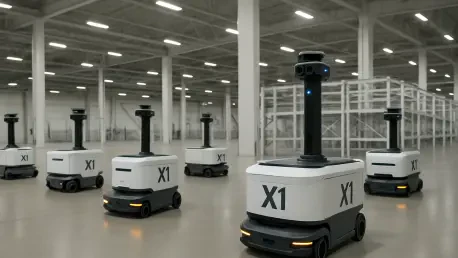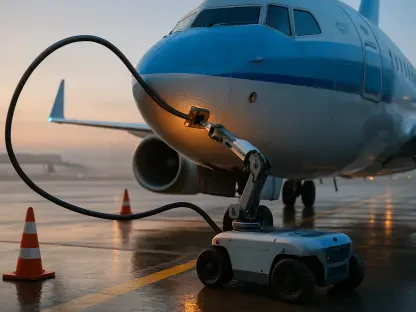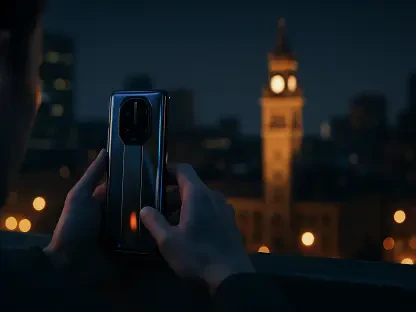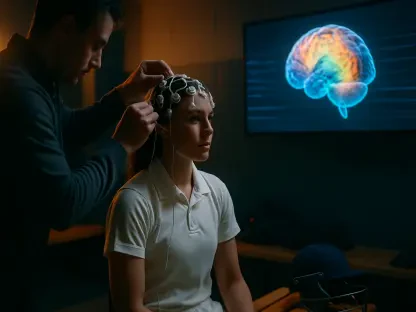I’m thrilled to sit down with Oscar Vail, a renowned technology expert whose work in quantum computing, robotics, and open-source projects has positioned him as a leading voice in the industry. Today, we’re diving into the groundbreaking X1 multirobot system, a pioneering collaboration between Caltech and the Technology Innovation Institute. Our conversation explores the innovative integration of humanoid robots and transforming drones, the challenges of cross-border teamwork, and the future of autonomous systems in emergency response and beyond. Let’s get started.
Can you give us an overview of the X1 multirobot system and explain what makes it such a significant advancement in robotics?
Absolutely. The X1 system is a first-of-its-kind setup that combines a humanoid robot with a transforming drone, called the M4, which can launch from the humanoid’s back and switch between flying and driving modes. This integration is a game-changer because it brings together multiple locomotion capabilities into one cohesive package. Typically, robots are limited to one mode—walking, flying, or driving—but X1 leverages the strengths of each to tackle complex scenarios, like emergency response, where speed and adaptability are critical. It’s a big step toward creating versatile, real-world robotic solutions.
How does the combination of a humanoid robot and a transforming drone set X1 apart from other robotic systems currently out there?
What sets X1 apart is the seamless synergy between the two components. The humanoid provides stability and the ability to navigate human-centric environments—like walking through buildings or up stairs—while carrying the M4 drone as a sort of backpack. The drone, on the other hand, extends the system’s reach by flying over obstacles or driving on wheels for efficiency. Most robotic systems are siloed in their functionality, but X1’s multimodal approach means it can adapt to a wider range of challenges, making it incredibly unique and versatile.
In what types of emergencies or real-world situations do you envision X1 being most impactful?
I see X1 excelling in scenarios where rapid response and adaptability are paramount. Think about disaster zones—earthquakes, floods, or building collapses—where you need to quickly assess an area that’s hard to access. The humanoid can navigate rubble or indoor spaces to get close, then deploy the drone to fly over hazards or cover ground faster. It could deliver critical supplies, map out danger zones, or even assist in search-and-rescue missions. The potential to save lives in these high-stakes situations is what really drives the importance of this technology.
Let’s talk about the collaboration behind this project. How did this partnership between different institutions come about, and what made it such a powerful alliance?
This project was born out of a shared vision to push the boundaries of autonomous systems. It’s a three-year collaboration between Caltech’s Center for Autonomous Systems and Technologies and the Technology Innovation Institute in Abu Dhabi. The partnership clicked because each group brought complementary strengths to the table—Caltech has deep expertise in locomotion algorithms and advanced control systems, while TII excels in autonomy and sensing for urban environments. Together, they’ve been able to tackle challenges that neither could solve alone, creating a truly innovative system like X1.
What were some of the hurdles you faced working across different countries and teams, and how did you navigate those challenges?
Working across continents definitely came with its share of hurdles, like time zone differences and aligning on technical priorities. Cultural and communication styles also played a role early on. But we overcame these by setting up regular virtual check-ins and fostering an environment of mutual respect. When engineers from both teams finally met in person, it was like putting the pieces of a puzzle together—everyone’s unique perspective strengthened the project. We also leaned on shared goals, like ensuring safety and reliability, to keep us aligned despite the distance.
During the demonstration on Caltech’s campus, the humanoid robot carried the M4 drone like a backpack. Can you walk us through how that demo unfolded and what it showcased?
The demo was designed to simulate an emergency response on campus, showing how X1 could get to a crisis point quickly. It started with the humanoid robot, based on a modified off-the-shelf model, carrying the M4 drone on its back. It walked through indoor spaces, navigated a library, and reached an outdoor elevated spot. There, it bent forward to launch the M4 in drone mode. The M4 then flew, landed, switched to driving mode for efficiency, and even flew again to cross an obstacle like a pond before reaching the “emergency” site. It showcased not just mobility, but the system’s ability to adapt in real time to different terrains and tasks.
Safety and reliability are clearly priorities for this project. Why is building trust in these autonomous systems so crucial to your team?
Trust is everything when it comes to deploying robots in real-world settings, especially around people. If these systems are going to assist in emergencies or urban environments, they can’t just be innovative—they have to be dependable. A malfunction or miscalculation could put lives at risk. That’s why we’re so focused on safety-critical control and rigorous testing. We want society to accept and rely on these robots, and that starts with proving they can operate securely and predictably, no matter the situation.
The approach to how X1 moves is quite different from most humanoid robots. Can you explain how your team uses physics and mathematical models to guide its actions?
Unlike many humanoid robots that rely on pre-recorded human movement data to mimic actions like walking, our approach with X1 is grounded in physics-based modeling. We create mathematical frameworks that describe how the robot should move based on fundamental principles of dynamics and balance. When paired with machine learning, these models allow the robot to adapt its gait or posture on the fly—whether it’s walking on uneven terrain, climbing stairs, or carrying a load like the M4 drone. It’s about teaching the robot to understand its own physics, not just copy a human.
Looking at the tech side, how do sensors like lidar and cameras enhance X1’s ability to interact with its environment?
Sensors are the eyes and ears of the X1 system. We equip it with tools like lidar, cameras, and range finders to build a detailed picture of its surroundings. These inputs are fused together through advanced algorithms to help the robot understand where it is and what’s around it—whether that’s a wall, a person, or an obstacle. This sensory awareness is critical for autonomous navigation, allowing X1 to move from point A to point B without human intervention, even in dynamic or unpredictable settings. It’s what makes real-time adaptability possible.
What is your forecast for the future of autonomous systems like X1 in shaping emergency response and other critical fields?
I’m incredibly optimistic about the trajectory of autonomous systems like X1. Over the next decade, I predict we’ll see these technologies become integral to emergency response, not just as tools but as first responders themselves—assessing situations, delivering aid, and coordinating with human teams before anyone even arrives on scene. Beyond emergencies, I see applications in logistics, urban planning, and even healthcare, where adaptability and autonomy can solve complex challenges. The key will be continuing to refine safety and trust, but the potential to transform how we handle crises and everyday tasks is limitless.









